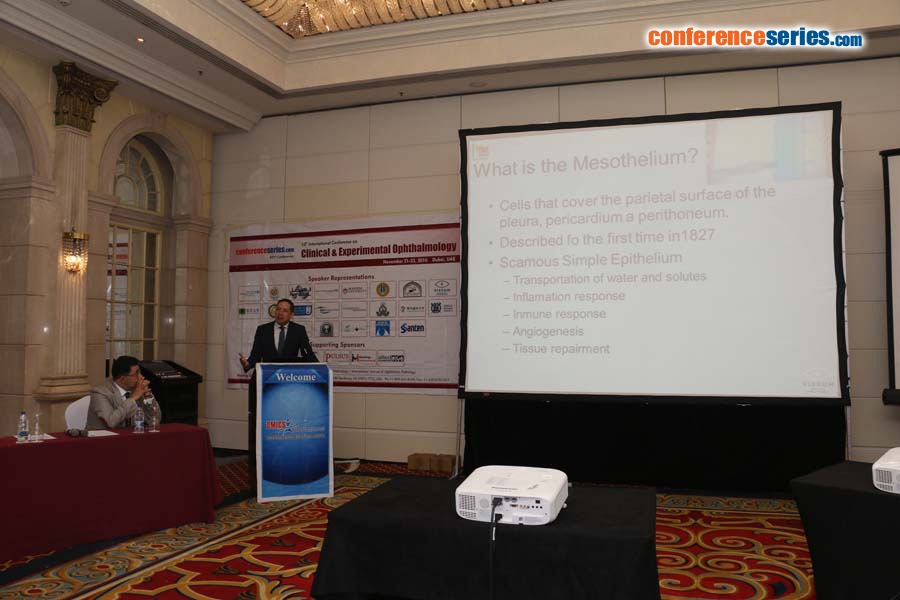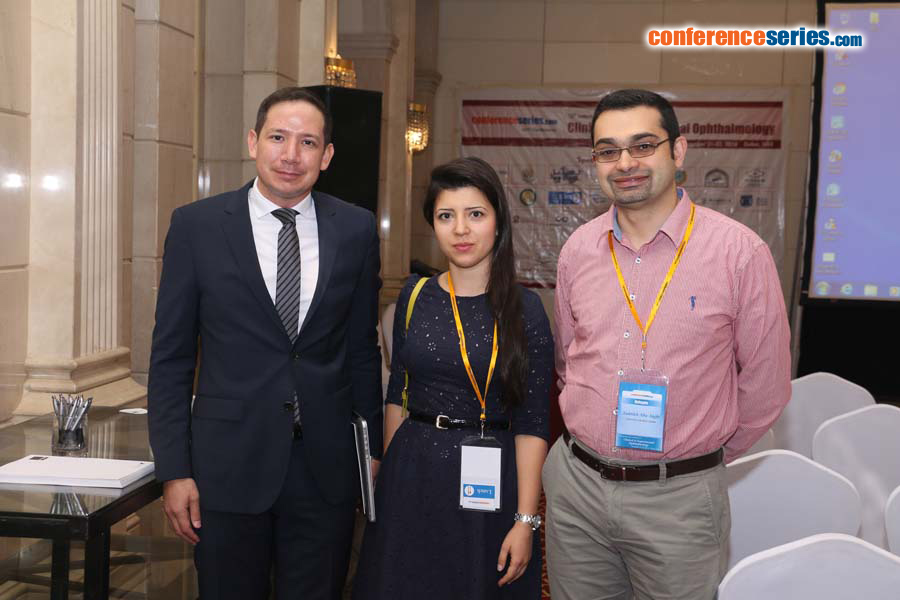
Felipe A Soria
Vissum Corporacion Alicante
Spain
Title: Mesothelial cells: A cellular surrogate for tissue engineering of corneal endothelium
Biography
Biography: Felipe A Soria
Abstract
Purpose: To evaluate whether mouse adipose tissue mesothelial cells (ATMCs) share morphologic and biochemical characteristics with mouse corneal endothelial cells (CECs) and to evaluate their capacity to adhere to the decellularized basal membrane of human anterior lens capsules (HALCs) as a potential tissue-engineered surrogate for corneal endothelium replacement.
Methods: Adipose tissue mesothelial cells were isolated from the visceral adipose tissue of adult mice and their expression of several corneal endothelium markers was determined with quantitative RT-PCR, immunofluorescence and Western blotting. Adipose tissue mesothelial cells were cultured in a mesothelial retaining phenotype medium (MRPM) and further seeded and cultured on top of the decellularized basal membrane of HALCs. ATMC-HALC composites were evaluated by optical microscopy, immunofluorescence, and transmission electron microscopy.
Results: Mesothelial retaining phenotype medium–cultured ATMCs express the corneal endothelium markers COL4A2, COL8A2, SLC4A4, CAR2, sodium- and potassium-dependent adenosine triphosphatase (Na./K.-ATPase), b-catenin, zona occludens-1 and N-cadherin in a pattern similar to that in mouse CECs. Furthermore, ATMCs displayed strong adhesion capacity onto the basal membrane of HALCs and formed a confluent monolayer within 72 hours of culture in MRPM. Ultra-structural morphologic and marker characteristics displayed by ATMC monolayer on HALCs clearly indicated that ATMCs retained their original phenotype of squamous epithelial-like cells.
Conclusions: Corneal epithelial cells and ATMCs share morphologic (structural) and marker (functional) similarities. The ATMCs adhered and formed structures mimicking focal adhesion complexes with the HALC basal membrane. Monolayer structure and achieved density of ATMCs support the proposal to use adult human mesothelial cells (MCs) as a possible surrogate for damaged corneal endothelium.




